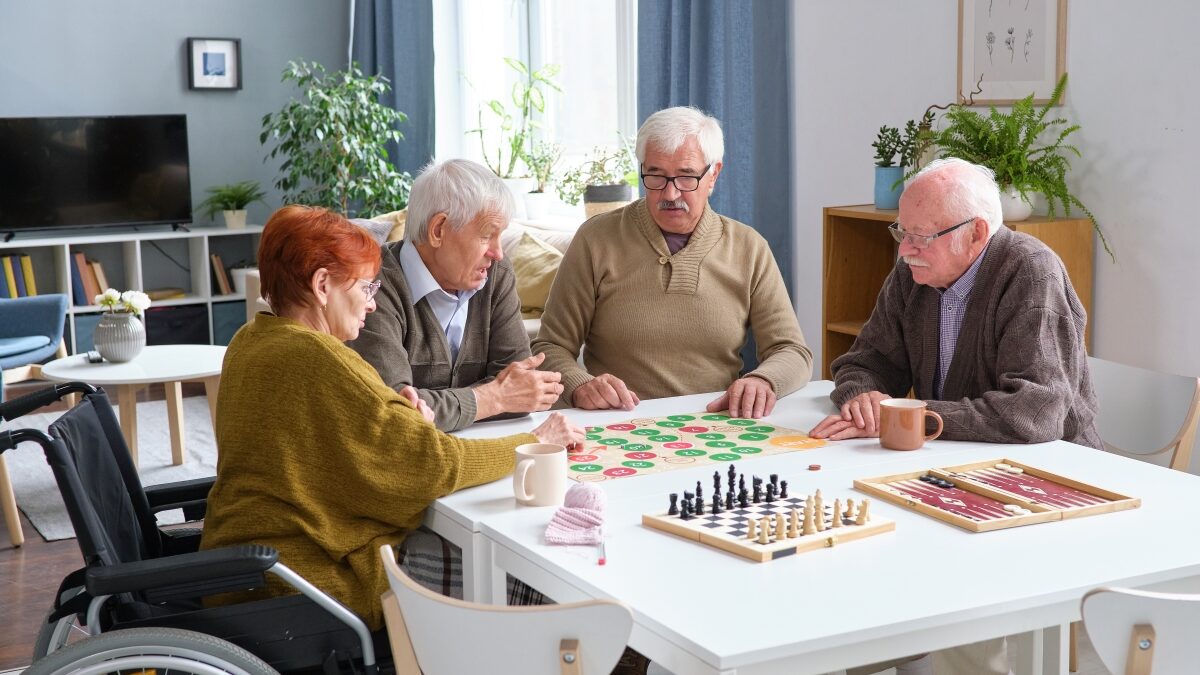
Senior Living Flooring Requirements
Keeping seniors safe, mobile, and comfortable are top considerations for senior living. Falls and injuries become more common as we age, and mobility becomes more difficult. So the surfaces seniors move around on need to facilitate ease of movement while protecting them from falls and injuries.
Slip Resistance
Slick flooring surfaces can be dangerous anywhere, especially in senior living environments. Also, the glare from glossy floors can cause difficulty, especially for seniors with vision issues. Slip-resistant flooring with a matte finish, like vinyl flooring, helps minimize slips and falls.
Comfort Underfoot
Hard surface flooring like hardwood or tile can cause foot and back fatigue. It is also more likely to cause injuries in the case of a fall. Soft carpet and resilient flooring like cork or vinyl with a cushioned underlayment offer more comfort underfoot and protection from falls.
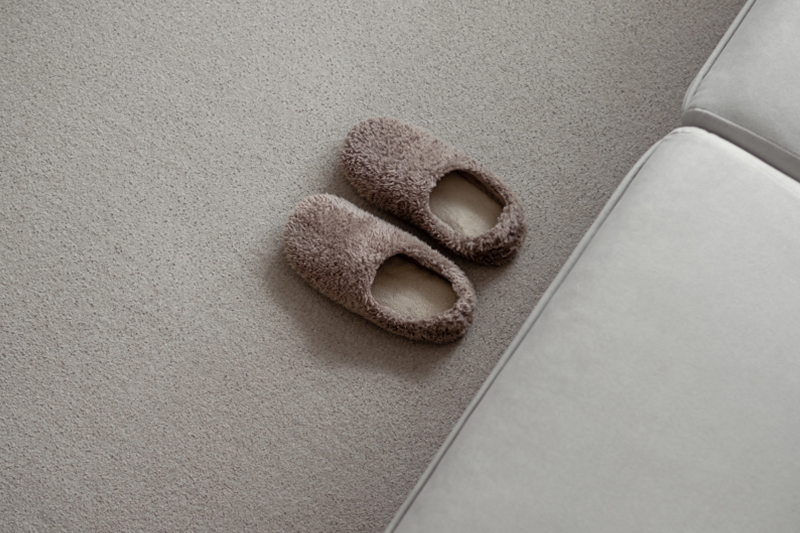

Ease of Movement
Keeping seniors mobile is critical to their health. Nursing home flooring needs to be smooth with level transitions. Thick carpets, uneven tiles or stones, area rugs, or uneven transitions pose slip and fall risks and can impede movement, especially for those using canes, walkers, or wheelchairs.
Easy Maintenance
Senior living or nursing home flooring must be easy to clean and stain-resistant. Busy staff members don’t have extra time to spend cleaning surfaces. Also, stained flooring can affect the satisfaction of current residents and make it difficult to attract new ones.
Durability
New flooring is a significant expense for senior living facilities, so facility managers prefer flooring that will perform and look good for many years. With high traffic seven days a week, durability is crucial.
Design
Since people live in long-term senior living facilities, it’s also essential for the interior spaces to feel like home. Providing beautiful surroundings, including flooring in hardwood and stone looks, can help seniors transition to assisted living. If you’re designing floors for a memory care facility, you’ll also want to avoid a lot of patterns, which can create confusion and cognitive issues for some residents.
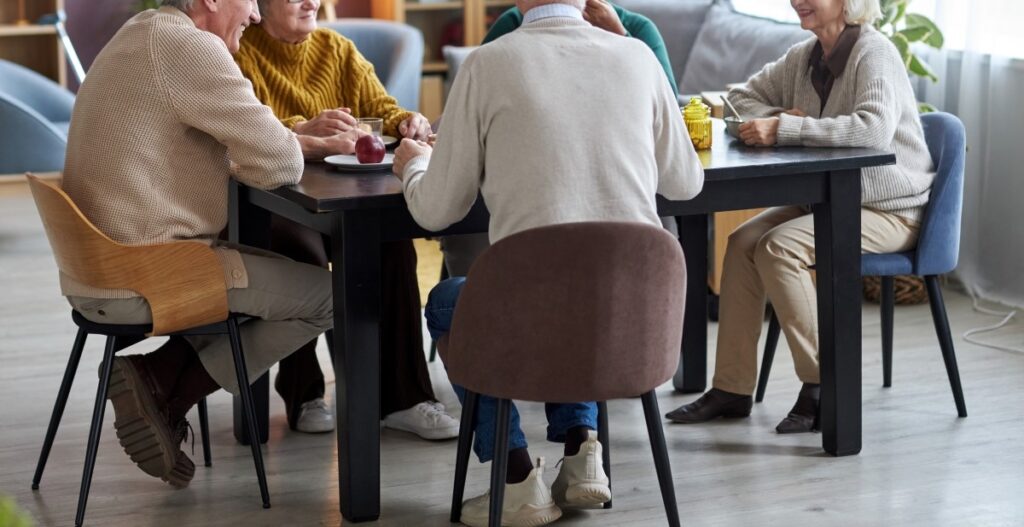
Best Flooring Options for Senior Living
Nursing home flooring needs to be high performance and low maintenance, with enhanced durability and residential design. It’s a lot to ask of the floorcovering, and many senior living communities use different flooring formats and designs to suit different areas. You’ll want to consider which flooring works best for every area of the facility, including resident’s rooms, dining halls, activity centers, lounges, corridors, and more.
Vinyl Flooring
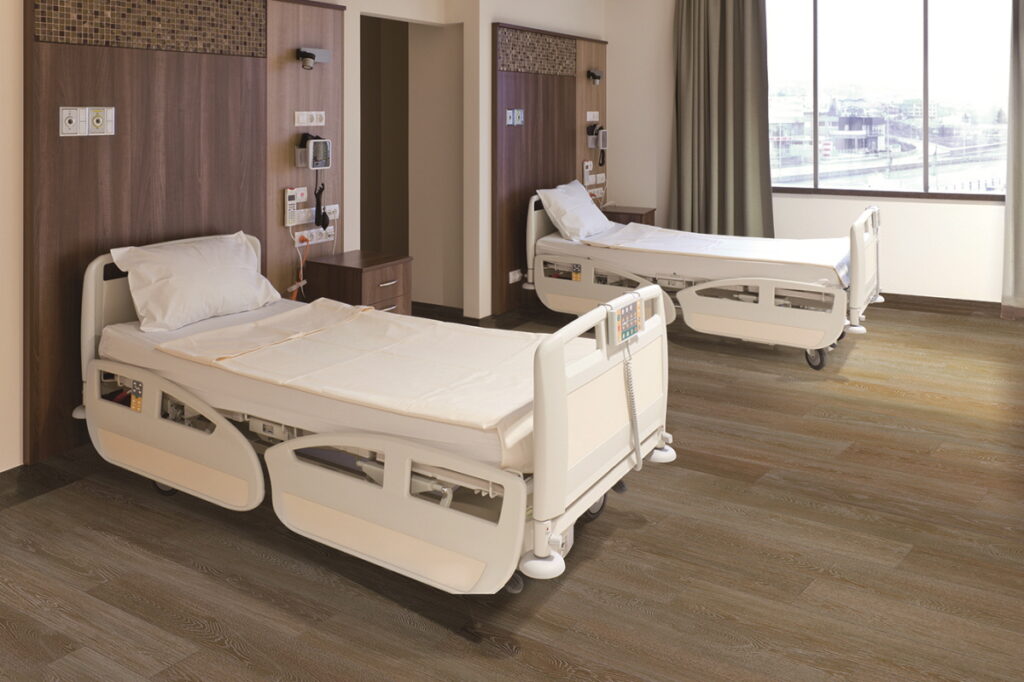
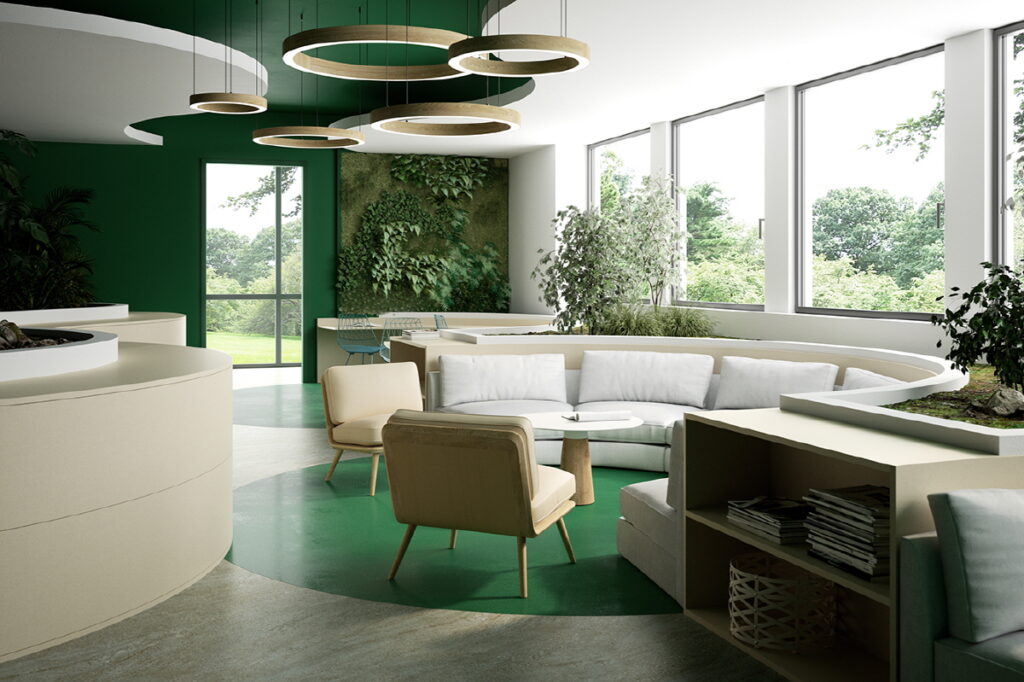
For nursing home flooring, homogeneous sheet vinyl can be used in any medical spaces that need to be sterilized. It also stands up to rolling equipment more often used in nursing homes.
Cork Flooring
Another resilient option, cork flooring, has risen in popularity in recent years. Like rubber, it is a natural option with comfort underfoot but comes in fewer designs and styles than vinyl flooring. It is relatively easy to clean but is more susceptible to damage and typically more expensive than vinyl.
Linoleum Flooring
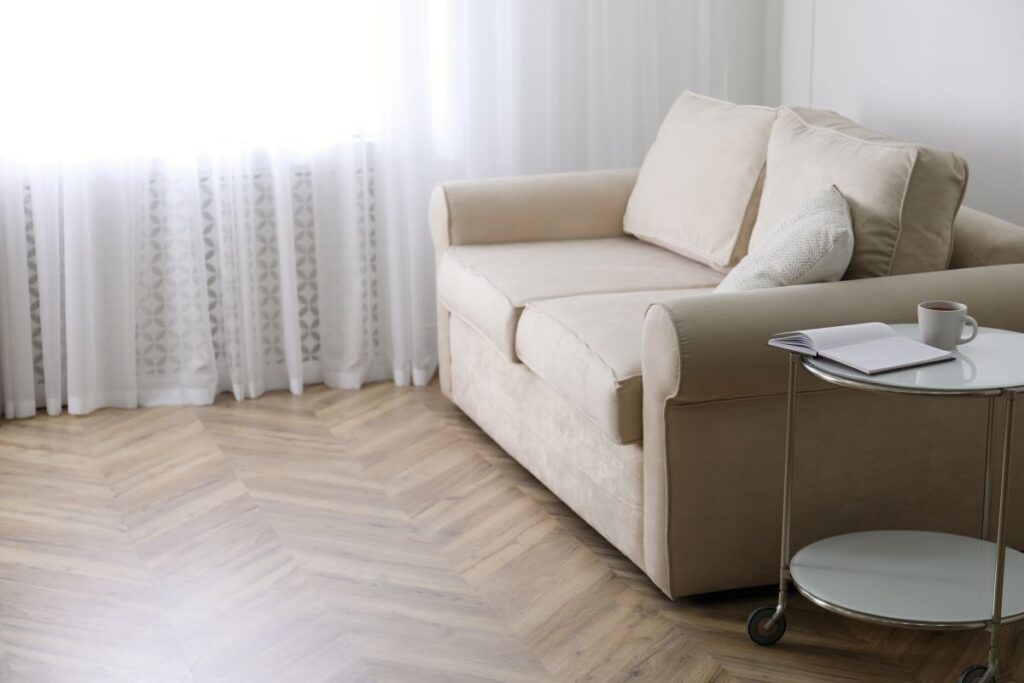
Another natural resilient option, linoleum flooring comes in tiles, planks, and sheet rolls but typically costs more. It is water and stain resistant but not as resistant as vinyl. It is naturally antimicrobial, but cannot be sterilized. Like vinyl, it needs a cushioned underlayment for better comfort underfoot and protection from injuries.
Contact Us
If you are looking for luxury vinyl flooring for a senior living community or nursing home, LX Hausys can help. Complete our contact form and one of our flooring experts will respond promptly.

